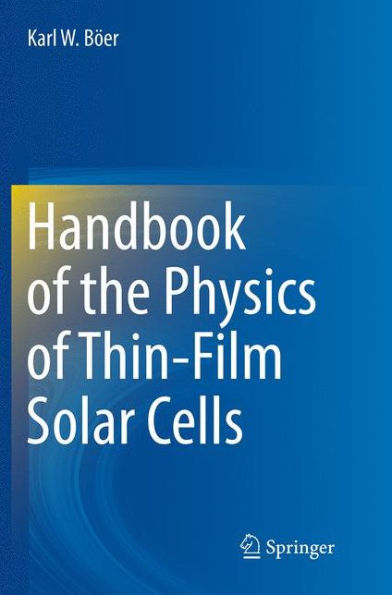This handbook is a compendium giving a comprehensive description of the basics of semiconductor physics relevant to the design and analysis of thin film solar cell materials. It starts from the basics of material science, describing the material and its growth, defect and electrical properties, the basics of its interaction with photons and the involved statistics, proceeding to space charge effects in semiconductors and pn-junctions. Most attention is given to analyze homo- and hetero-junction solar cells using various models and applying the field-of-direction analysis for discussing current voltage characteristics, and helping to discover the involvement of high-field effects in solar cells. The comprehensive coverage of the main topics of - and relating to - solar cells with extensive reference to literature helps scientists and engineers at all levels to reach a better understanding and improvement of solar cell properties and their production. The author is one of the founders of thin film solar cell research.
1128694108
Handbook of the Physics of Thin-Film Solar Cells
This handbook is a compendium giving a comprehensive description of the basics of semiconductor physics relevant to the design and analysis of thin film solar cell materials. It starts from the basics of material science, describing the material and its growth, defect and electrical properties, the basics of its interaction with photons and the involved statistics, proceeding to space charge effects in semiconductors and pn-junctions. Most attention is given to analyze homo- and hetero-junction solar cells using various models and applying the field-of-direction analysis for discussing current voltage characteristics, and helping to discover the involvement of high-field effects in solar cells. The comprehensive coverage of the main topics of - and relating to - solar cells with extensive reference to literature helps scientists and engineers at all levels to reach a better understanding and improvement of solar cell properties and their production. The author is one of the founders of thin film solar cell research.
599.99
In Stock
5
1

Handbook of the Physics of Thin-Film Solar Cells
882
Handbook of the Physics of Thin-Film Solar Cells
882Paperback(Softcover reprint of the original 1st ed. 2013)
$599.99
599.99
In Stock

Product Details
| ISBN-13: | 9783662511497 |
|---|---|
| Publisher: | Springer Berlin Heidelberg |
| Publication date: | 08/23/2016 |
| Edition description: | Softcover reprint of the original 1st ed. 2013 |
| Pages: | 882 |
| Product dimensions: | 6.10(w) x 9.25(h) x (d) |
About the Author
From the B&N Reads Blog
